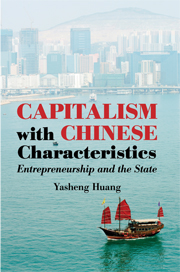A Detailed Synopsis of the Book
Published online by Cambridge University Press: 06 July 2010
Summary
Since 1978, the Chinese economy has grown phenomenally. This is not in dispute. By exactly what mechanisms has China managed to grow so fast? There is more room for debate on this question. The near-consensus view – or the view that has achieved the greatest traction – among economists is that China has grown by relying on unique, context-specific local institutional innovations, such as ownership by the local state of township and village enterprises (TVEs), decentralization, and selective financial controls. The conventional mechanisms of growth, such as private ownership, property rights security, financial liberalization and reforms of political institutions, are not central components of China's growth story.
Much of the economic research on the Chinese reforms revolves around the following question: Given the manifest inefficiencies in the Chinese economy, how do we explain its growth? The answer, often backed up by formal, mathematical models, is that seemingly inefficient policies, practices, and institutions – such as public ownership of TVEs and financial controls – perform underlying efficient functions in the specific context of China. The approach is typically inferential – these efficient functions of observably inefficient forms are inferred from China's excellent economic performance.
- Type
- Chapter
- Information
- Capitalism with Chinese CharacteristicsEntrepreneurship and the State, pp. xiii - xviiiPublisher: Cambridge University PressPrint publication year: 2008

